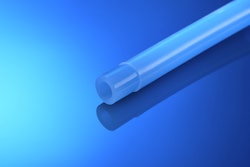The FDA approved the first pacemaker that does not require the use of wired leads to provide an electrical connection between the pulse-generating device and the heart.
While the Micra Transcatheter Pacing System works like other pacemakers to regulate heart rate, the self-contained, inch-long device is implanted directly in the right ventricle chamber of the heart.
The leads in a traditional single chamber pacemaker run from the pacemaker, implanted under the skin near the collarbone, through a vein directly into the heart’s right ventricle; the leads deliver electric pulses from the generator to the right ventricle and help coordinate timing of the chamber’s contractions.
Micra eliminates these leads, which can sometimes malfunction or cause problems when infections develop in the surrounding tissue, requiring a surgical procedure to replace the device.
The FDA evaluated data from a clinical trial of 719 patients implanted with the Micra device, which found that 98% of patients in the trial had adequate heart pacing six months after the device was implanted.
Complications occurred in fewer than 7% of participants in the clinical trials and included prolonged hospitalizations, blood clots in the legs (deep vein thrombosis) and lungs (pulmonary embolism), heart injury, device dislocation and heart attacks.






















